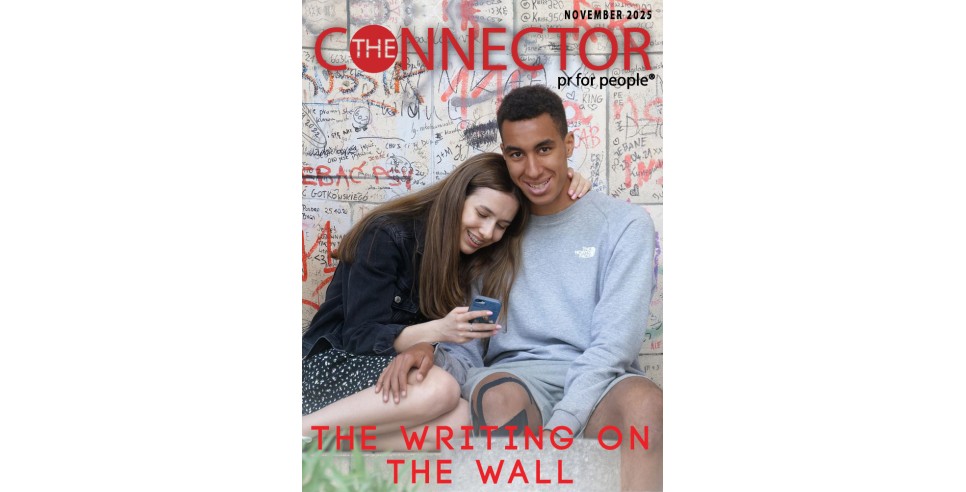
We celebrate gratitude in November. Telling someone thank you is another way of showing that you care. Showing gratitude doesn’t have to be taught or learned; it’s simply saying Thank You. Thank you for everything. Thank you for being in my life. My article this month The Writing On The Wall examines reading, writing and the decline of the novel. I am grateful for the many novels I have read, and I adore the authors who have written them. Some books are better than others, but every book I have read has become part of me. My article is my way of saying thank you to all of the authors whose books have touched my life. Do you have a story to share about a book that transformed your life? Happy Thanksgiving! –Patricia Vaccarino
Dishing the Dirt: Art, Food, and Identity by Barbara Lloyd McMichael For the past year, a veritable feast of French Impressionist paintings has been touring the United States. Organized in partnership with the American Federation of the Arts and originating at the Chrysler Museum of Art in Norfolk, Virginia, the exhibition called “Farm to Table: Art, Food, and Identity in the Age of Impressionism” was designed to coincide with a worldwide celebration of the 150th anniversary of the first-ever Impressionist exhibition in Paris. Since the exhibition’s debut last fall at the Chrysler, it has gone on to the Frist Art Museum in Nashville and the Cincinnati Art Museum in Ohio. Late last month the exhibit opened at the Seattle Art Museum, where it will be on view until January 18, 2026.
The Writing On The Wall: On Reading, Writing, and the Decline of the Novel Novels enrich our lives because we touch the fragile threads of the diverse fabrics that weave us together. We begin to see the connections in things and become spellbound by the certainty that no one person is on this earth alone. All of us are slogging through the muck and the mire, navigating the joy, the sorrow, the grief, and the pratfalls that throw us haphazardly off course only to be consumed by a reckless wind. A good novel teaches us that it is noble to be a human being. –Patricia Vaccarino
Book Review: Green Mansions by W.H. Hudson “Green Mansions” is a seemingly unlikely story to transform the life of a child, but there I was traveling with a young man “Abel” who had embarked on an adventure in the wild, uncharted jungles of Guyana. The land was inhabited by lush forests, mountains and rivers that were pristine, untouched. Wild animals never before seen appeared within the infinite walls of the “green mansions.” The most magnificent being of all is the beautiful and wild Rima, a young woman who speaks in a strange, lilting language only known to birds and her lost tribe. –Patricia Vaccarino
Book Review: The World is Made of Glass by Morris L. West “The World is Made of Glass” seduced me into believing that no human being, no matter how evil, is beyond hope. In “The World is Made of Glass,” the Australian Author Morris L. West, who also wrote “The Shoes of the Fisherman,” had a flair for telling stories that explored redemption. Magda is a brilliant medical doctor and a wealthy society diva, but she is also a sociopath who murdered her best friend and stole her husband. Magda is over-the-top, but she is also entirely credible as a woman who wants to develop compassion but is clueless as to how to begin the journey to get there. –Patricia Vaccarino
Book Review: Death Comes for the Archbishop by Willa Cather Two Catholic Priests began their journey when they were very young men in France. Now as missionaries in New Mexico, their journeys are intertwined, but often quite separate, too. Willa Cather conjured New Mexico as a dream that turns out to be true. Ochre and yellow, half shades of green lay between the sea and groves of olives, old, old tamarisks, and the rainbow flowers of quivering blood-red tubes. “Elsewhere the sky is the roof of the world; but here the earth was the floor of the sky.” –Patricia Vaccarino
Tone, Culture, and Conflicts of Interest by Annie Searle Annie Searle writes about the root causes of “risk” currently destabilizing the U.S. leadership. The first root cause of risk is tone at the top. If integrity and ethics are modeled by executives at the top of an organization, employees generally follow the example they observe. The second root cause of conduct risk is workplace culture. If there is a mismatch between tone and executive behavior, an adjustment is in order. She identifies conflicts of interest as the third cause of conduct risk. A “conflict of interest” is “A situation in which a person is in a position to derive personal benefit from actions or decisions made in their official capacity.”
Thanksgiving Roundup: Food For Thought
Cranberry sauce, fry bread, and gratitude? Meh, say tribes by JoAnne Dyer
A mouth-watering Thanksgiving Feast! Thanksgiving Spotlight on Mary Beth Lawton Johnson, CEPC, CCC Certified Chef de Cuisine, Certified Executive Pastry Chef, Culinary Designer
Ethnic Thanksgiving: Cultural Appropriation? by Anna Faktorovich
Learning to Pray by the Reverend Anne Saunders








